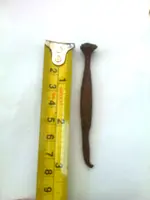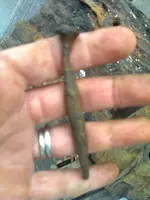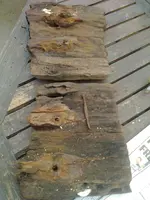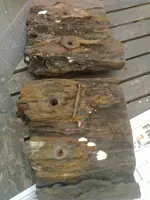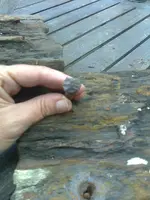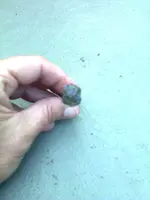I sent the photos to the Australian Maritime Museum and here is their reply.
Thank you very much for notifying the ANMM of your discovery of the wooden object near the end of the runway at Botany Bay. In looking at your photographs, the fastener appears to be a ‘cut’ iron spike that has been subjected to considerable corrosion and deterioration. The corrosion has been particularly severe in areas where the fastener has been exposed to air (i.e., not covered by the wood in which it was embedded), which is why it appears to be much wider—and better preserved—at its centre. Pitting associated with corrosion of the fastener’s head has given it the appearance of a rose pattern, but this appears to be purely the result of natural processes, and not a diagnostic feature of its manufacture.
Cut fasteners are produced from iron plate or bar stock and were the result of a mechanised process that was developed in the United States and Great Britain between 1790 and 1820. The means by which they were manufactured gives them a distinct rectangular cross-section (rather than the square cross-section more common of hand-forged fasteners). Cut fasteners continued to be used until the early 20th century, although their frequency began to decline around the 1860s with the advent of the wire fasteners which are so common in construction today.
The two wooden objects associated with the fastener appear to be plank ends, but it’s very difficult to ascertain exactly where they originated from, or what they once comprised. Given the location of the find, they may have been part of a wharf or other form of maritime infrastructure, but could have just as easily been part of a standing structure on land (such as a shed or outbuilding) built from wooden slat construction. Your discovery of these objects wedged between rocks leads me to believe that they very likely originated from elsewhere (possibly as flotsam washed up by wave action), but it’s hard to be certain.
Thank you again for notifying the Museum of your find! Should you encounter additional objects in the area that appear as though they may be associated with what you’ve already found, please feel free to let us know.
Kind Regards,
James Hunter
Dr James Hunter
Curator RAN Maritime Archaeology
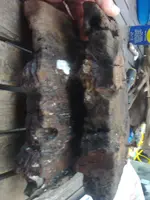
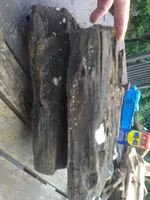
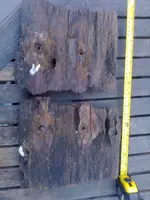
![Photo0844[1].webp Photo0844[1].webp](https://www.treasurenet.com/data/attachments/1037/1037621-dd98bf08f4188bb8f09af43109f3486d.jpg?hash=2SVsUo966w)
